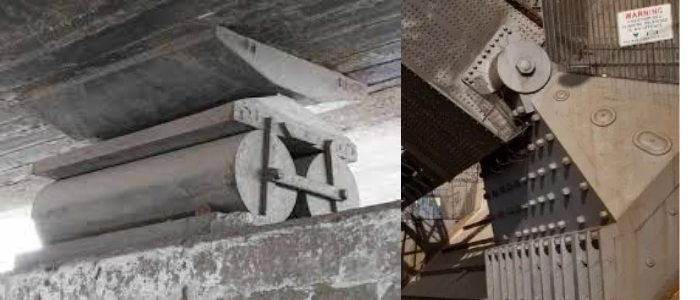Types of External Supports: Supports are one of the most important elements of a structure, since they specify how the forces and loads within the structure are transferred finally to the ground. There are various types of supports exist in buildings. Knowing these types is essential in the process of analysis of structures as supports determine the boundary conditions. Incorrect simulation of supports in the modeling process will produce incorrect analysis results which impair the integrity of the structure.
Types of Supports
There is a general classification for supports which divides them into two types: external and internal. This article covers the various types of external supports only.
Types of External supports
This kind of supports is often provided in an external way without affecting the structural elements themselves. There are various types of external supports:

Fixed supports
A fixed support is the most rigid kind of support. It prevents the structural elements from translations and rotations in all directions. This means fixed support resists forces and moments. A famous example of this kind of supports is a column fixed into concrete. For a two-dimensional problem, a fixed support will have 3 unknowns (2 forces and 1 moment). In three dimensions, the support will have 3 unknowns (3 forces and 3 moments). A fixed support is beneficial in case only one single support can be used. Thus, it provides a restriction of motion and rotation in all directions.

Pinned Support
Pinned (or hinged) supports are very commonly applied in various structures. The hinge permits rotation to happen but restrains any translation. This means it resists vertical and horizontal forces but not moments. An easy example for a hinge is the door that rotates only about its vertical axis without translation in any direction. Pinned supports can be used in trusses and three hinged arched bridges. One limitation for this kind of support is the inability to completely restrain a structure as we need at least two supports to resist the moment.

Roller Support
Rollers can only resist perpendicular forces. They cannot resist horizontal forces and of course, moments. In other words, rollers are allowed to translate along the surface without any resistance to horizontal forces. Rollers are popular in bridges; a bridge will usually have a roller support at one end to consider vertical displacements and expansion resulting from temperature differences.

Link Support
A link support permits rotation and movement in the direction perpendicular to the length of the link. It prevents any movement in the direction of itself. Thus, only one force component exist for link supports which is a force in the link direction.
Simple Support
This is basically when a structural member rests on other members. They are sort of similar to rollers in such a way that they restrain vertical forces but not the horizontal forces. An example is a plank of wood resting on two concrete blocks. This kind of supports are not commonly used in the real applications unless the designer is totally sure that the element will not translate, otherwise there is a huge risk the member is going to fall of the support.

